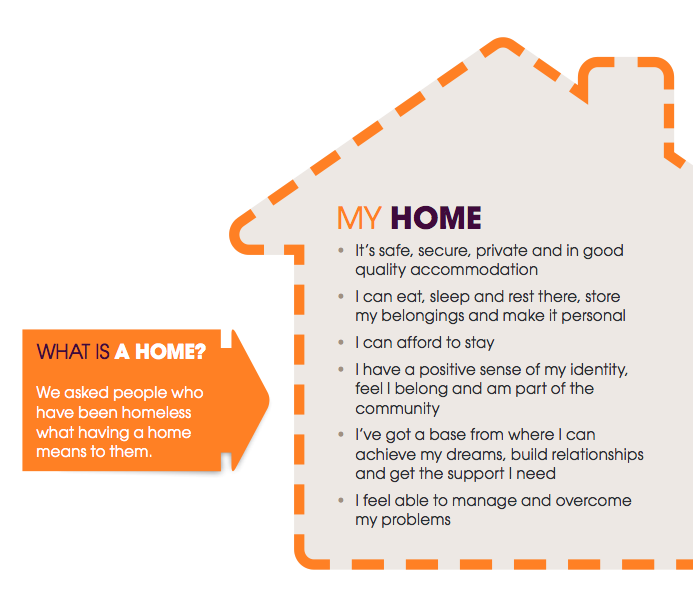There is a difference between having a place to sleep at night and place to call home. While many people who are homeless live on the streets and in shelters (although a growing trend that criminalizes homelessness may prevent homeless people from even sleeping on the streets), do these areas meet the definition of what a home is really supposed to be? Homeless Link, a UK based national charity representing organizations serving homeless people surveyed individuals living in critical housing situations to find out what the word home means to them.
At first glance, the answers may not appear to reveal all that much. Most would agree that a home should be a secure and private location. It should be a place where an individual can afford to live. It should be a safe place to live, where individuals feel a sense of belonging and have the ability to manage and overcome their problems. However, when we compare the services and supports currently in place, it’s clear that our social safety net has gaps through which adults, youth, and families with children are falling through.
The paths to homelessness are incredibly varied. Homelessness may be caused by spiking rental costs, or the inability to afford housing. These causes can be faced head on through rent subsidies and increasing the availability of affordable housing. There are many other pathways that individuals take to homelessness. For instance, a single mother may flee from an abusive relationship with her children. A youth who identifies himself as LGBTQ2 is kicked out of their home and has all their supports, emotional and financial, cut off from them. These are not examples that represent outliers of the homeless population; they are representative of whole subsets of Canada’s homeless population. These are not situations that can be remedied without well thought-out, experience-informed policy and practice. These are situations that require additional research, services, and situation-specific solutions. To date, despite an extremely disproportionate representation of LGBTQ2 youth among Canada’s homeless population, there still does not exist a single specialized shelter service targeting their specific needs anywhere Canada. It’s essential that the circumstances that caused homelessness and impact the psychosocial well-being of homeless populations be taken into consideration when drafting potential housing solutions. For LGBTQ2 youth, a home means a place where they feel like they can grow and experience healthy interpersonal relationships and be free from continued stigma and discrimination.
Even though Homeless Link represents charities across England working to end homelessness, a lot of their findings are directly applicable to the issue of homelessness in Canada today. Though there can be differences in laws and policies between countries, the evidence of similarities in homelessness means the impact of research conducted often extends beyond national boundaries. Research done abroad can have important implications for Canada’s approach to homelessness and vice versa. Solutions should address the problem of homelessness, rather than just ‘houselessness’. After all, home is much more than a place to sleep.


